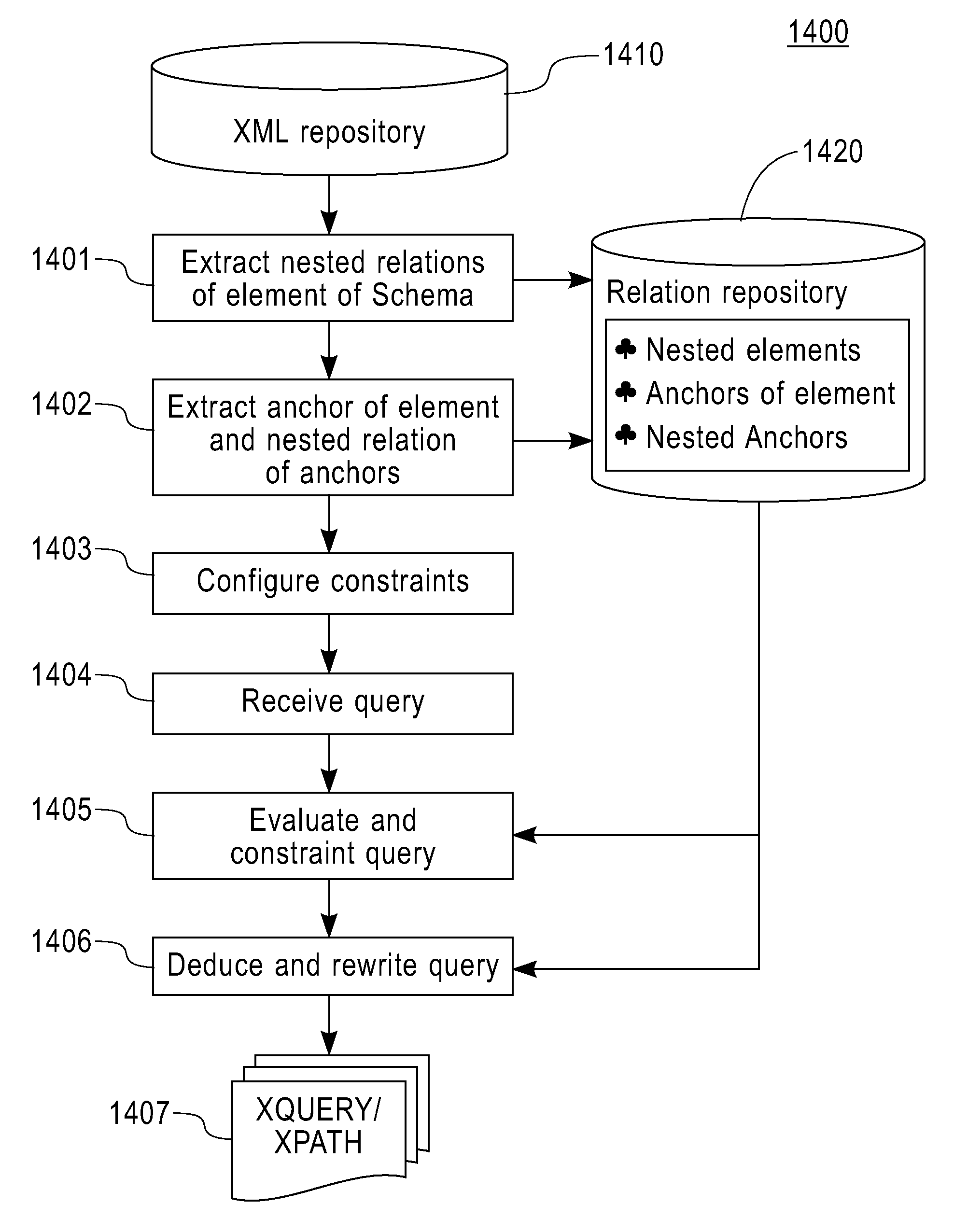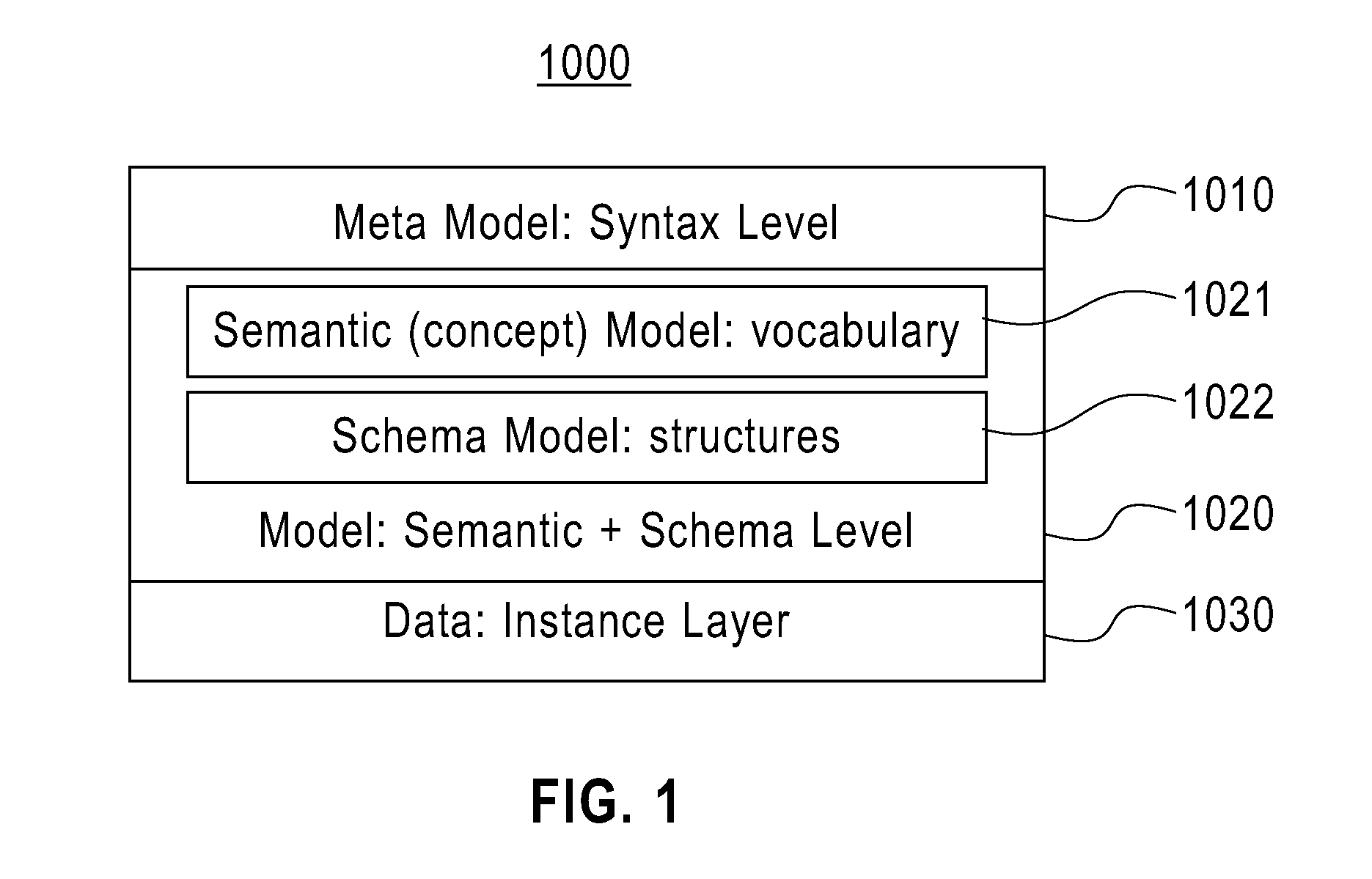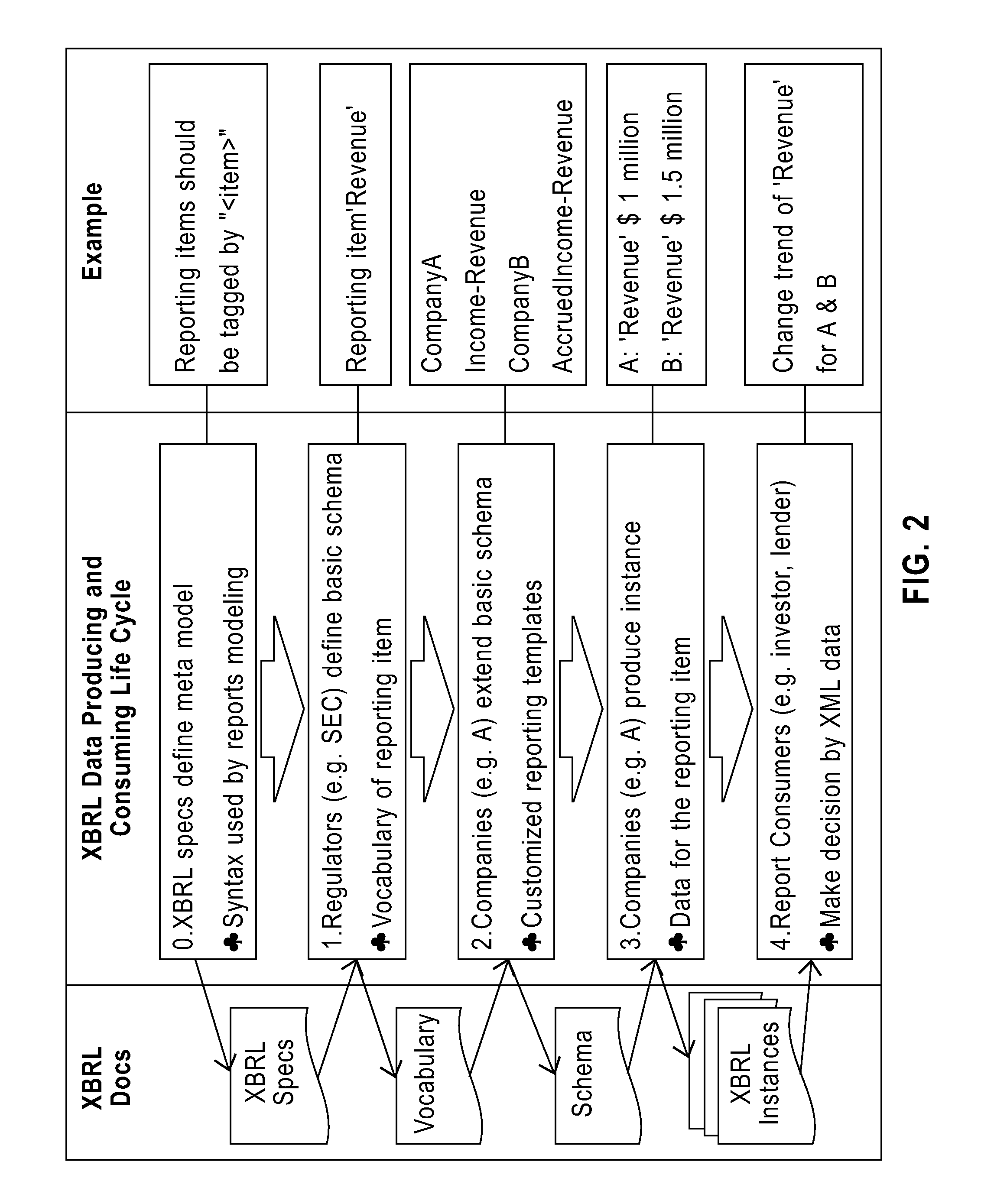Method and system for constructing XML query to schema variable XML documents
- Summary
- Abstract
- Description
- Claims
- Application Information
AI Technical Summary
Benefits of technology
Problems solved by technology
Method used
Image
Examples
Embodiment Construction
[0043]XML documents usually separate the value (instance) of concepts into several segments within XML document sub-trees, and link the contexts, constraints and limitations of the values via Anchors (also called attribute-reference, context reference), which actually builds reference relationships between different XML sub trees. In order to illustrate the reference relationship between sub-trees, a description is given with reference to FIGS. 7 and 8 in view of a CDA document and an XBRL document.
[0044]The following example of a CDA meta model defines some principle elements (attribute) of CDA documents:[0045]header (meta data)[0046]Patient[0047]Document[0048]Author[0049]Authenticator[0050]Encounter[0051]. . . and more . . .[0052]body (clinical data)[0053]Observations[0054]Procedures[0055]Medications[0056]. . . and more . . .
[0057]A CDA document complying with the CDA specification is given as follows:
Complications Thrombocytes were taken on the second day post-bmt ...
PUM
 Login to View More
Login to View More Abstract
Description
Claims
Application Information
 Login to View More
Login to View More - R&D
- Intellectual Property
- Life Sciences
- Materials
- Tech Scout
- Unparalleled Data Quality
- Higher Quality Content
- 60% Fewer Hallucinations
Browse by: Latest US Patents, China's latest patents, Technical Efficacy Thesaurus, Application Domain, Technology Topic, Popular Technical Reports.
© 2025 PatSnap. All rights reserved.Legal|Privacy policy|Modern Slavery Act Transparency Statement|Sitemap|About US| Contact US: help@patsnap.com



